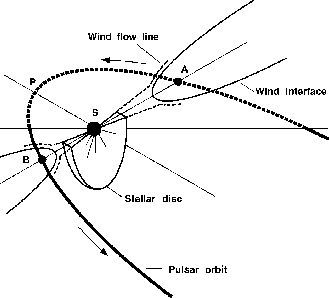
Simon Johnston's eccentric pulsar PSR B1259-63 has again passed by its massive stellar companion. A major international effort to observe the close approach has answered some questions and raised many more for Simon, Lewis Ball and Olaf Skjæraasen.
Of the nearly 800 radio pulsars known, PSR B1259-63 stands alone. It is one of only two pulsars known to be in orbit around a star many times the mass of our Sun. The companion of PSR B1259-63 is particularly unusual - it is known as a Be star and is very hot and bright, is about ten times as massive and six times as large as our Sun, and is ejecting material from its surface primarily through a dense disk of material around its equator. The orbit of the pulsar about its companion is very elliptical and every 3.5 years, at closest approach, the pulsar passes through the Be star's disk. The pulsar remains behind the disk and obscured from the Earth for about 30 days before it reemerges. This last occurred in May 1997 and was observed extensively by an international team of scientists coordinated by Simon Johnston.
As B1259-63 rounds its Be star companion the pulses of radio emission (whence these exotic objects get their generic name) disappear quite suddenly. At about the same time unpulsed radio emission suddenly appears. While Simon and one group of collaborators have been working on the observations of this extraordinary event, Lewis Ball, Simon, Andrew Melatos (UCB) and Olaf Skjæraasen have been investigating the origin of the unpulsed emission. All pulsars produce a wind of highly energetic electrons. X-ray emission detected from PSR B1259-63 has been believed to be synchrotron radiation from the pulsar wind particles spiraling about magnetic field lines. The same process is thought to produce the unpulsed radio emission observed from some other pulsars. However, Lewis and his collaborators have shown that although the unpulsed radio emission from PSR B1259-63 is synchrotron radiation, it cannot be produced by particles from the pulsar wind. They argue that the emission comes from electrons from the Be star disk which are accelerated at a shock wave produced as the pulsar crashes through the disk. The characteristic twin peaked structure of the unpulsed radio brightness variation arises as the pulsar plows through the disk just before its closest approach to the Be star producing the first peak, disappears behind the disk for a short time, and then plows back through the disk on the other side of the star.

A cartoon of the PSR B1259-63 system, showing the Be star (labeled S), the lower half of the stellar disk and the radio pulsar as it passes through the disk (at A and then again at B). The closest approach to the star occurs at periastron (labeled P). Also indicated is the pulsar wind interacting with the disk, and the pulsar orbit, the dashed part of which is behind the plane of the sky. Figure courtesy of the ATNF.
A remarkable series of observations was made of the pulsed radio emission from PSR B1259-63 on 12 March 1997. Electromagnetic radiation consists of oscillating electric and magnetic fields. The direction of oscillation is most commonly random, but in some circumstances the oscillation is restricted to one direction - linear polarization - or describes a circle - circular polarization. The linear and circular polarization characteristics of the emission from pulsars are generally very stable and provide important clues to the structure of the source of the emission. The figure below shows the total intensity, and the linear and circular polarization of PSR 1259-63 during four observations taken one hour apart just before the pulsar disappeared behind the Be star disk. Amazingly, although the total intensity did not change, the linear and circular polarizations varied rapidly, an effect which has never been seen in any other pulsar. Simon and his collaborators believe that the linear polarization is being converted to circular polarization as the radiation passes through the highly-magnetized wind of the Be star. Modeling of the system is currently underway with a view to determining the structure of the stellar wind.
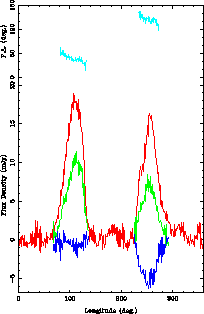 | 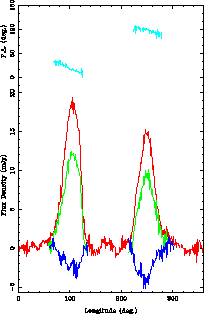 | |
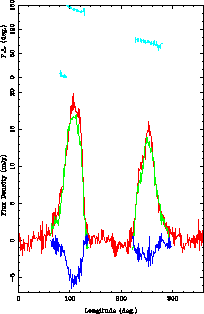 | 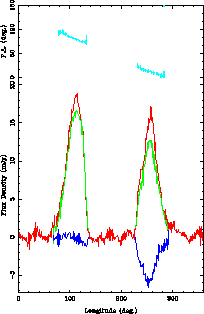 |